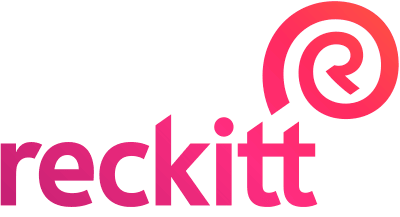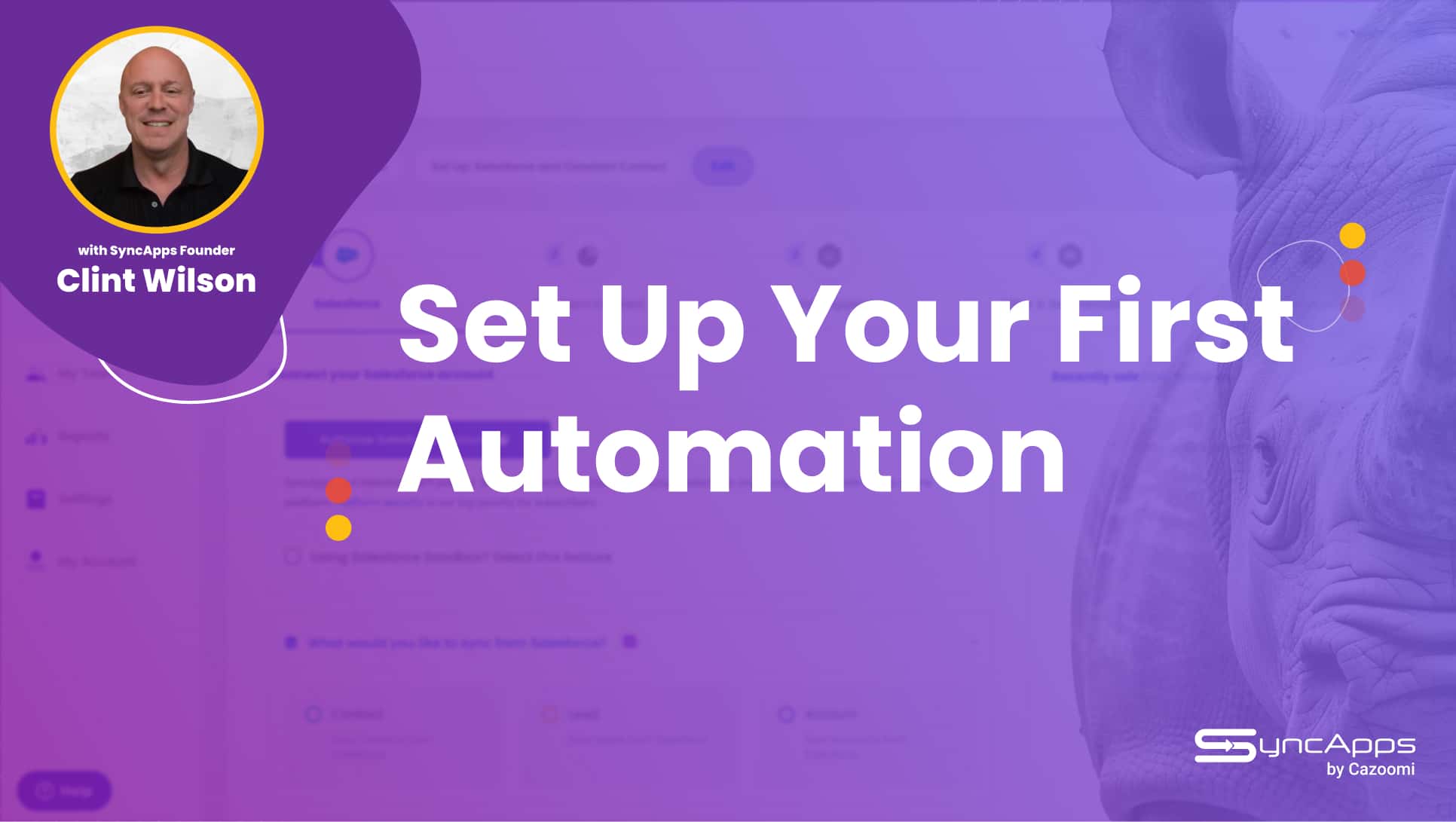
We have all experienced it at one point or another. No matter how organized and “professional” we set out to be at our workplace, burnout somehow creeps up on most of us when we least expect. Small business owner burnout is getting more and more prevalent.
It is what it is. Your body has its limits – you are not a robot.
In their International Classification of Diseases, the World Health Organization classifies burnout as an occupational phenomenon.
According to the organization, burnout is “a syndrome conceptualized as resulting from chronic workplace stress that has not been successfully managed. It is characterized by three dimensions: feelings of energy depletion or exhaustion; increased mental distance from one’s job, or feelings of negativity or cynicism related to one’s job; and reduced professional efficacy.”
Being a small business owner can be rewarding, but it can also be emotionally draining. Every decision carries significant financial implications for the business, employees, or investors.
As a business owner, you bear numerous responsibilities. You decide whom to hire, how to manage customer relationships, handle budget cuts, and you are also accountable for the well-being of your employees.
You are constantly in the spotlight with decisions that could make or break your company. It can get overwhelming and you are at risk of burnout.
If left unchecked in its initial phases, well, it can be a slippery slope. Getting yourself out of that murky situation can be an expensive and gut-wrenching affair – you definitely don’t want to go there.
According to recent Gallup research, burnout directly affects performance, relationships, health, and career growth.
What Burnout Looks Like For A Small Business Owner
Jesse Lynn Hanley, MD, who coauthored Tired of Being Tired, says burnout is not a medical disorder. One of the negative consequences of prolonged stress is adrenal fatigue.
Initially, you are pumped and are working day and night due to the overstimulation of your high-activity hormones. When exhausted, you overcompensate with caffeine, willpower, and adrenaline. Eventually, however, you run low on the high activity hormones.
You are trying to speed up but in reality, you are just slowing down. Instead of achievements, you start experiencing illness, accidents, and memory loss. You begin taking over-the-counter sleep pills or fight fatigue with coffee. Your self-esteem disappears and you start feeling a little like you aren’t really good enough.
You are always tired, alarmingly thin (or chubby), and always grumpy. You have trouble sleeping due to thoughts racing through your mind.
You become irritable at home and at work with either temper tantrums or crying. It becomes hard to remember things like your children’s names or passwords.
You become prone to accidents or get a serious illness. In some extreme cases, you end up using drugs from the street or from a shrink who thinks you are depressed.
You get the picture, right?
Some of the symptoms of burnout, according to the Mayo Clinic, include excessive stress, insomnia, sadness, irritability, fatigue, substance abuse, high blood pressure, heart disease, type 2 diabetes, and vulnerability to diseases.
Sixty-five percent of adults at the start of a burnout situation constantly feel run down and drained of emotional and physical energy.

Image Source: Statista
Ever caught yourself thinking: I hate my business, I need to quit it and start something new?
Before you do that, consider that you may be experiencing SME burnout. Yes, burnout is more prevalent in SMEs because you have to wear multiple hats.
Pssst, if you don’t have the budget to hire someone new to take some of these things off your plate, why not outsource to automation? Let integration do the heavy lifting for you and forget about building reports manually or hunting customer insights across multiple platforms.
Bring it all together with SyncApps. Start integrating Salesforce, NetSuite, Mailchimp, Constant Contact, NPSP and more for only $49.99/month and let go of some of the daily stress.
Trusted by brands around the globe Join them
A small business owner experiencing burnout has some or all of these symptoms:
1. Where there was once passion, frustration rules
You have worked hard to build your business but at this point, you just want to quit. It’s simply becoming hard to complete your day-to-day tasks.
You were burning with passion at the very beginning and looked forward to going to work every day. However, stress crept in and now you are frustrated. You are detached and tasks that used to bring you joy don’t anymore.
You feel like you have no purpose and are struggling to show up for work daily.
Burnout has entered the building!
Passion drives you to achieve more. You work day and night to achieve that which you have set your sights on, which is great.
However, if you continue at this pace every day of your work life without breaks to recharge and soak it all in, the excitement slowly wears off.
The job that you once loved so much sadly becomes a job you no longer want to think about, let alone do!
2. Procrastination has set in
Do you keep putting off tasks until tomorrow or the next hour? How many emails are pending? How many people do you need to call back? What of that heap of work you have been pushing behind your desk all week?
Procrastination happens to most people, but when you make it a habit, it becomes a big problem. When you realize that you don’t want to deal with clients anymore or keep pushing meetings to a later day, then there is a problem.
Clients are an important aspect of your company’s growth and postponing meetings may drive them to your competitor.
3. You keep forgetting things
Once or twice, you will forget your wallet or phone. But when forgetting things starts interfering with work, it’s cause for concern.
That late invoice you sent to an already angry customer, a missed appointment scheduled a day ago, or a new customer presentation you forgot to prep for are all signs of burnout.
4. Chronic exhaustion
Exhaustion is normal in all occupations. No career is immune to exhaustion.
However, if you are always tired even after a good night’s sleep, then there is a problem. Your mind is always churning even when not at work.
You are restless about that client meeting, a marketing campaign, that upcoming presentation, those travel obligations, and those other pressing matters.
Exhaustion sets in with a nagging feeling that you need to be doing more. Eventually, you begin doubting your competence, the decisions you make, and your performance.
How Small Business Owners Can Deal with Burnout
The key to dealing with burnout is recognizing the symptoms. If you act on the symptoms, then you can avoid most health issues associated with burnout.
The success of your company depends on your well-being too. Be mindful of the signs mentioned above and remember that preventing is always better than trying to cure. It’s a cliché but it’s true.
Below are some quick tips on ways that you can prevent or deal with burnout:
1. Define goals
If you feel like you are not accomplishing everything you set out to do, re-evaluate your goals. They may be too broad, unrealistic, or just don’t exist at all.
Define your major goals then segment this into smaller, attainable goals that lead up to your major goals. Define milestones and metrics to determine if a goal has been accomplished or not.
Take time to appreciate and celebrate the small wins. Pat yourself on the back even for achieving little things. As you accomplish the smaller goals, they boost your morale and drive you to accomplish the bigger goals. The little things will soon add up to something great.
Another way to handle this is by focusing on what is working, then reworking things that are not. Start by writing down what you want to accomplish. It will give you clarity on what is not working.
2. Manage your time right
Time is valuable for a small business owner.
Come up with a schedule to determine when you are the most productive. What is your best method of working?
Use your productive hours to tackle challenging tasks needing energy and brainpower. Tackle smaller tasks when you feel less motivated.
Schedule your time right and assign tasks depending on how much time it takes to complete them.
3. Find the work-life balance
A recent survey by Havard Business Review found a connection between passion and burnout. Entrepreneurs with high scores of obsessive passion experienced more burnout than those with high scores of harmonious passion.
The obsessively passionate felt emotionally drained by work to the point of breaking down. Their burnout caused constant anxiety and stress.

Image Source: Scale Time
The harmoniously passionate entrepreneur has high levels of concentration, absorption, and attention at work. They give their all at work but allow themselves breaks and flexibility. They have a work-life balance and can perform other activities without guilt or conflict when not at work.
Striking a balance is necessary to keep the passion for work going and to live a happy life. Take occasional breaks to recharge. The key is to find hours that make sense either daily or weekly and disconnect. Step away from the business completely and engage in other social activities.
According to research, millennials have problems achieving a work-life balance. Their relationships are suffering due to this and they have nightmares about their businesses failing.

Image Source: Small Business Online
To maintain both physical and mental health, consider engaging in activities like:
- Exercise
- Meditation
- Getting a massage
- Sleeping
- Hanging out with friends or spending time with kids
- Watching sports or movies
- Attending a concert
- Reading
- Something, anything other than work!
Take a vacation occasionally too. Plan and schedule time away from work for it. You don’t have to go to an exotic place or spend lots of money.
Instead, choose an experience that will take your mind off work for a while as you reflect and have fun. You can engage with children by organizing enjoyable quizzes using trivia questions for kids or participating in other entertaining interactive activities. Set boundaries during the vacation so that you don’t keep worrying or running to check an email.
4. Get organized
A lack of organization is one of the reasons small business owners get stressed out. Lack of control of the day to day processes leads to a list of overdue tasks.
It becomes overwhelming and could make it hard to focus on any task. Everything will fall into disarray because you end up working on some tasks and leaving others out.
To break this cycle, organize your work life. Start with simple things like getting your desk organized, for instance. Once you’ve got your workstation all sorted, organize your computer by cleaning up your desktop and start enjoying the benefits of keeping organized at work.

Solve your data integration challenges today using the SyncApps platform.
Access now
Use procedures and tools that make these processes automatic. Doing this reduces distractions and allows you to take charge of your day-to-day tasks systematically.
5. Delegate
Delegating doesn’t come easy for small business owners. It’s your business and so you want to be in control at all times. You want everything to turn out right and hence most of your time is spent micromanaging employees.
There’s absolutely nothing wrong with wanting everything to go exactly as you need it to but this can also work against you if you don’t get into the habit of delegating.
Failure to delegate makes it hard to make decisions. You end up spending more time doing routine tasks and struggling to keep up with tasks. You fail to develop staff skills, have an underworked team and you are always handling tasks outside your skillset.
If you have problems trusting that work will be done effectively, invest time training employees or completing tasks together. Doing this prepares them for more responsibilities and builds a sense of responsibility and trust.
According to research, delegating helps CEOs generate 33 percent more revenue. If anything, this is why you should delegate more.
Before approaching each of your tasks, ask yourself whether someone else on your payroll can get it done. Otherwise, you end up being the sales rep, accountant, customer care, social media manager, and CEO.
If you don’t have employees yet, outsource to an individual or another company and focus on the bigger picture.
Speaking of the bigger picture, burnout in SMEs is often a symptom of choice paralysis. So many options, so much data, and you don’t know what to act upon.
Reduce data and mental clutter with integration. Integrate your mission-critical solutions and get the data-driven insights to act quickly and confidently.
6. Take care of yourself
As you stay on ‘top of things’ in your business, you also need to ‘stay on top’ of your physical and mental wellbeing. Address issues with your health immediately and change habits that could lead to burnout.
Do not let issues overwhelm you. Sometimes all you need is a change of course. For example, if you notice you have added on some weight, you can enroll to your local gym and spend one hour every day taking care of yourself.
The exercise will not only help you shed weight but it will also give you time off work to take care of your physical wellbeing.
Tools Small Business Owners Can Use to Avoid Burnout
Small business owners say that managing their businesses is four times more stressful than raising kids.

Image Source: Small Business Online
Working too much can suck the joy out of owning your business. It’s overwhelming, and you may not have enough cash to hire employees.
But there is another easier way to handle most of the tasks in your small business. There are specialized tools to automate most of your tasks, save time, and save money. They will take care of all the repetitive and mundane tasks so that you can concentrate on bringing in more business.
Some of these tools include:
Sales and marketing automation tools
These automation tools help you deliver the right products to the right customers. They also assist you in delivering the right content.
They remind customers to complete purchases, thank them for making a purchase, and so much more. Marketing automation tools also help you get leads and nurture them through the purchase process.
1. HubSpot

HubSpot provides you with tools to help your company with SEO, email, blogging, marketing automation, landing pages, and web analytics. Their inbound marketing platform helps your small business attract visitors, convert leads and close customers.
2. Mailchimp

Mailchimp gives you control over your marketing efforts. You can create and manage mailing lists, automated campaigns, newsletters, and more.
It gives you access to numerous marketing tools located conveniently in one place. They also have free pricing for the first 2000 contacts.
Mailchimp also integrates with other apps and web services so that you leverage your marketing efforts.
3. Hootsuite
Hootsuite helps you automate your social media marketing. With Hootsuite you can;
- Track all your social channels from one location.
- Get real-time updates on what people are saying about your brand online
- Get advanced analytics and in-depth reports
- Find influencers
4. Zendesk
This sales automation software empowers your sales team with a bird’s eye view over everything that matters. It allows them to prioritize leads so they can concentrate their marketing efforts on the sales-ready leads.
Some of the features include email tracking, built-in SMS and calls, and a contact management system.
Zendesk integrates with other platforms including Mailchimp, Dropbox, Google Suite, and more.
Project Management and Finance Tools
Track your finances and projects with these tools:
1. QuickBooks
QuickBooks is a great tool for managing invoices, paying bills, generating insight reports, tax filing, running payroll, accepting online payments, scanning receipts, and tracking cash flows.
2. Basecamp

Basecamp is a project management tool that provides your team with all the tools needed to complete projects. Some of the features include to-do lists, group chats, schedules, documents and file storage, message boards. It’s great for collaborations with clients and teammates.
3. NetSuite

NetSuite is a cloud-based platform that allows small businesses to manage all their business processes from one platform. Use it to manage inventory, host e-commerce stores, track financials, enterprise resource planning, and customer relationship management systems.
For even better results, integrate NetSuite with your email automation solution — Mailchimp, Constant Contact, ActiveCampaign, and others.
4. Xero

Xero is a great choice if you run online accounting. You can easily integrate it with your CRM to sync important accounting entities.
Once integrated, you can synchronize your invoices, payments, bills, and accounts. You also get additional features including product category modes and tax codes.
Customer Relationship Management (CRM)
Customer relationship management tools help you manage interactions with customers. They help you retain customers and drive growth.
1. HubSpot

Small business owners can use the free version of HubSpot. It includes all the basic features of a CRM that help you to track company activities. You can:
- Assign and track deals
- Track contacts and company profiles
- Manage data using a detailed dashboard available to all team members
- Boost inbound sales
HubSpot also offers integrations with other apps like Salesforce, Microsoft Dynamics, and eCommerce sites.
2. Salesforce

With Salesforce, you can access all your customer data from one location. It allows you to:
- Deliver support across phone, email, social channels, and chat.
- Manage accounts, contacts, and support cases
- Track meetings and emails automatically
- Create custom reports and dashboards
Salesforce integrates with other apps, including marketing tools, productivity, financials, email marketing, and more.

3. Zoho

The CRM allows small business users to generate more leads, increase conversions, and grow their business. It integrates with other platforms with ease and provides you with an organized environment.
You can connect your social media accounts and also connect with site visitors using their chat tool. You also get smart analytics, insights on trends and forecasting.
4. Microsoft Dynamics 365

Microsoft Dynamics 365 provides a solution for sales and marketing teams. It assists businesses with lead generation, marketing automation, tracking, and streamlining sales processes.
You also get AI-driven insights and forecasting to help improve the sales process.
With Dynamics 365, you can integrate with other Microsoft software like Excel, Word, Outlook, and others.
5. Sugar CRM

Sugar CRM has a wide range of features, from sales to marketing. Some of the features include:
- Insights for sales and marketing
- Quotes management
- Mobile CRM apps
- Sales forecasting
- Sales lead management
- Easy customization
- Project management
- Workflow automation
- Marketing campaigns (create, execute and track)
- Connect social channels
Communication tools
They help you communicate with client’s customers and other vendors.
1. Skype

Skype helps with international calls, and video conferencing. You can use the app on your mobile phone or computer. It allows you to share photos, presentations, and videos during calls.
2. Google Hangouts

Google Hangouts also works with phones and computers. It’s great for communication especially if your client, customer, or employee is a Google user tool.
3. Zoho Meeting

Zoho Meeting is an online meeting solution. You can use it to hold live meetings or share product demonstrations.
It offers detailed analytics reports and is a great tool for collaboration with screen sharing, video, and moderator controls.
Conclusion

As a small business owner, you work hard to reach your goals and increase revenue for your company. Being the boss means more responsibilities and great financial risks. The long hours and constant stress can certainly lead to burnout.
The first step to avoiding burnout is to recognize potential signs. These often just creep up on you when you least expect but if you take good care of your physical and mental well-being daily, you will notice the signs early.
Pay close attention to how you feel and take steps to remedy situations as fast as you can. Take some time off and during this time, establish boundaries between your work and personal life.
It’s important to realize that your personal life affects your productivity and that working harder at your business will not solve the burnout problem. Burnout has physical and mental consequences and if you make the necessary changes, both you and your business will benefit.
Whenever possible, use business tools to improve productivity and make work easier, even for your employees. There are numerous small business tools you can use to improve your processes, and some of them are free. These will help you work smarter and find enough time in a day to work.




















